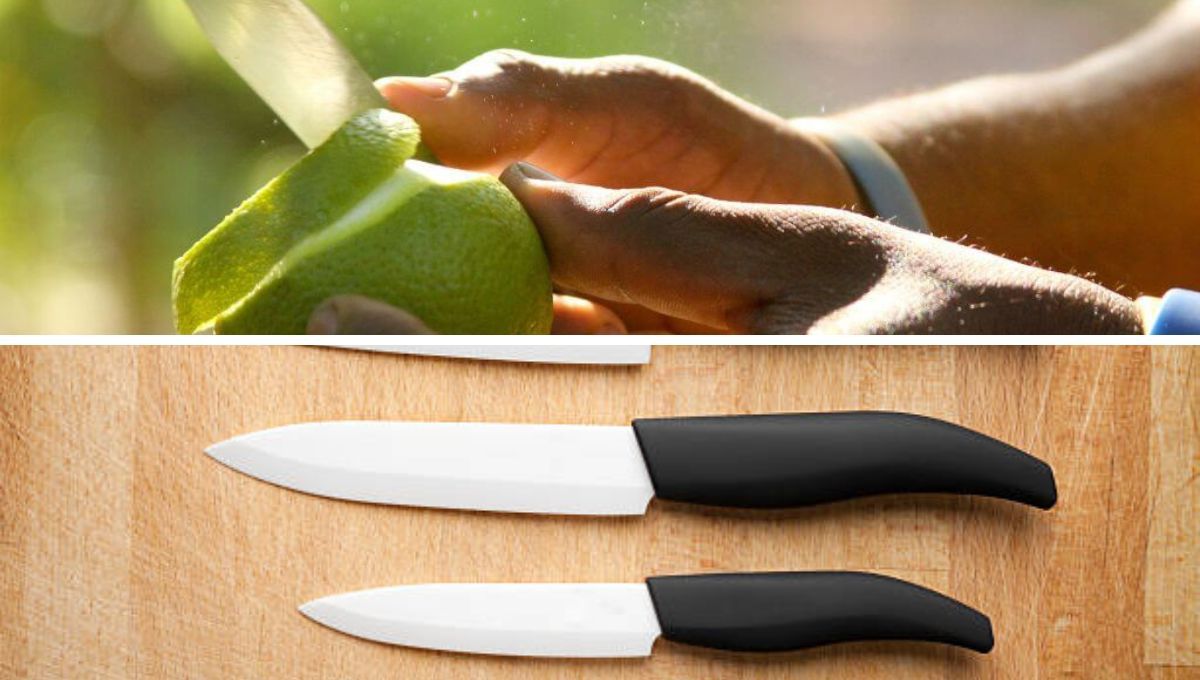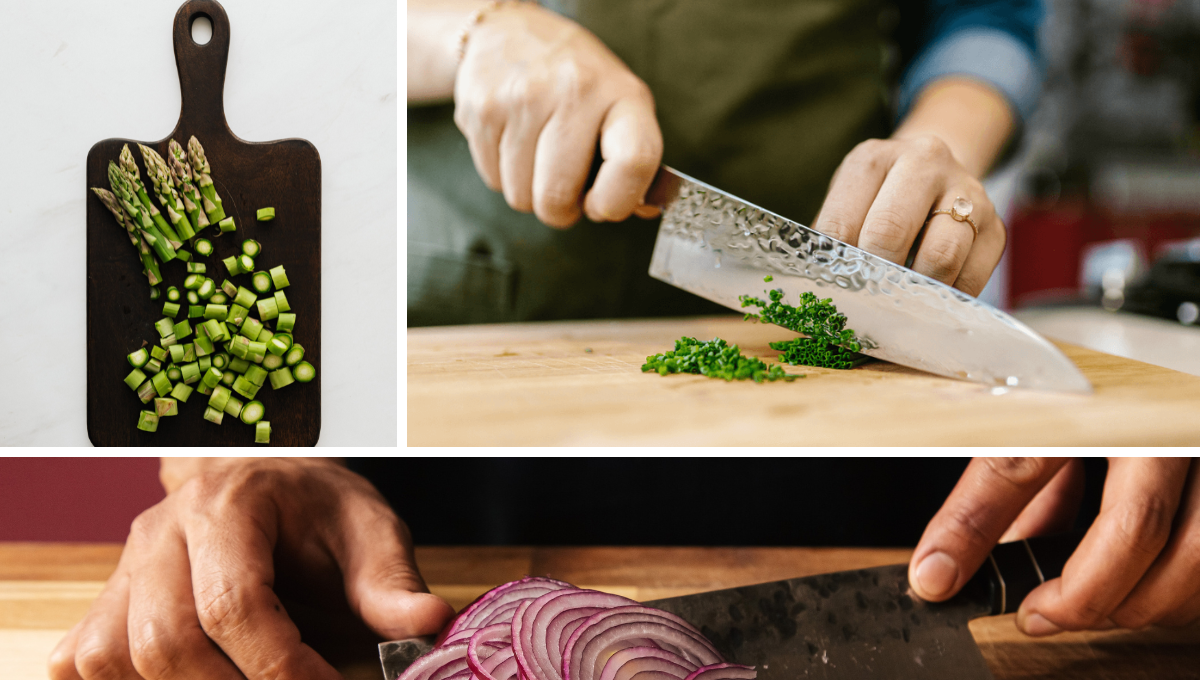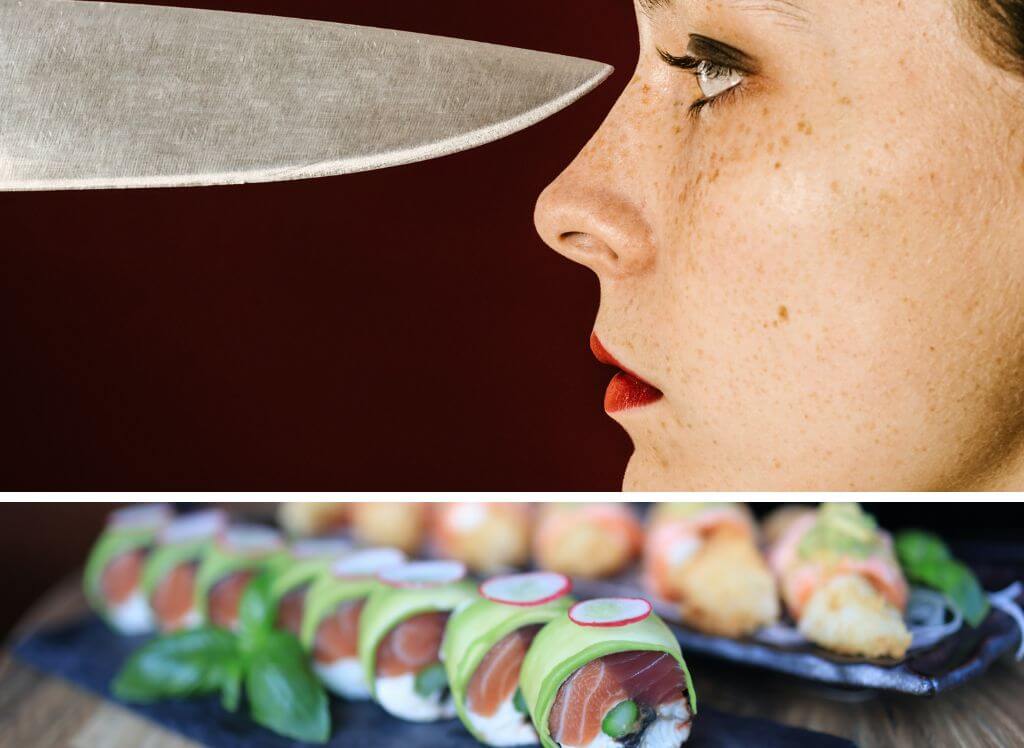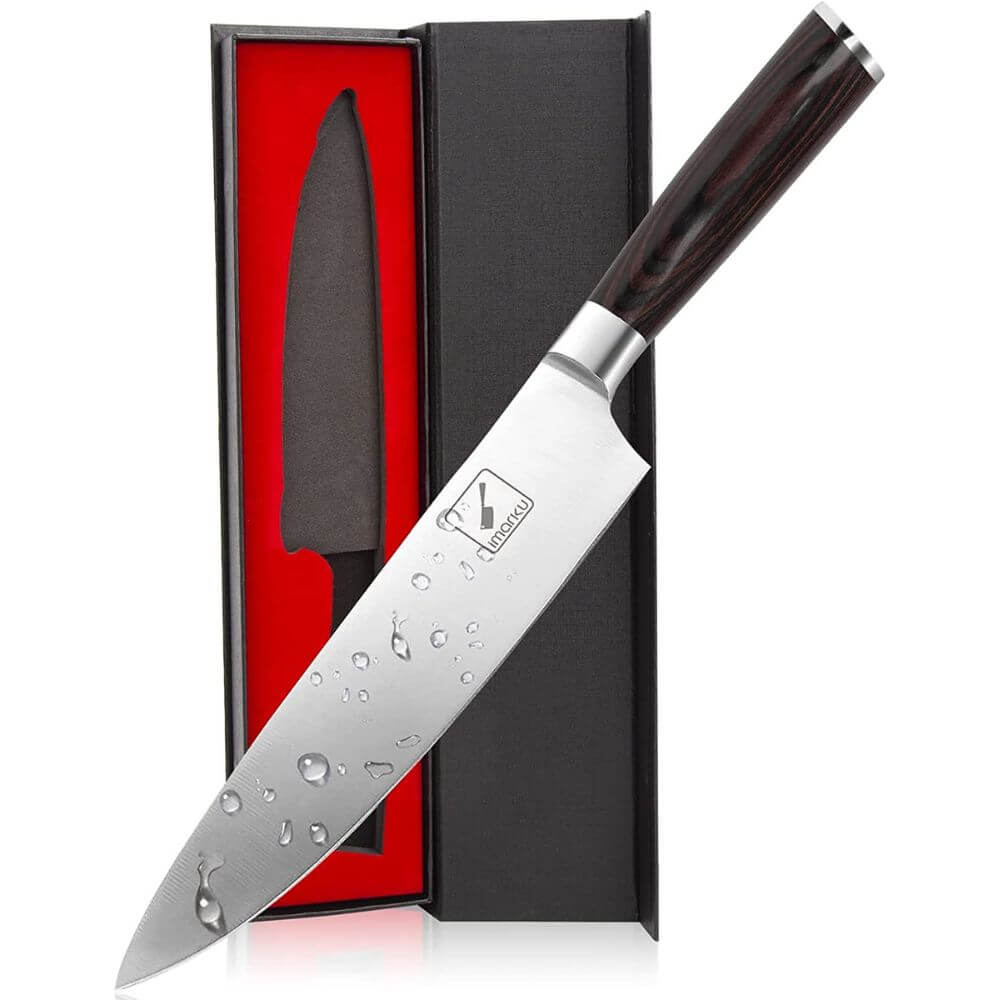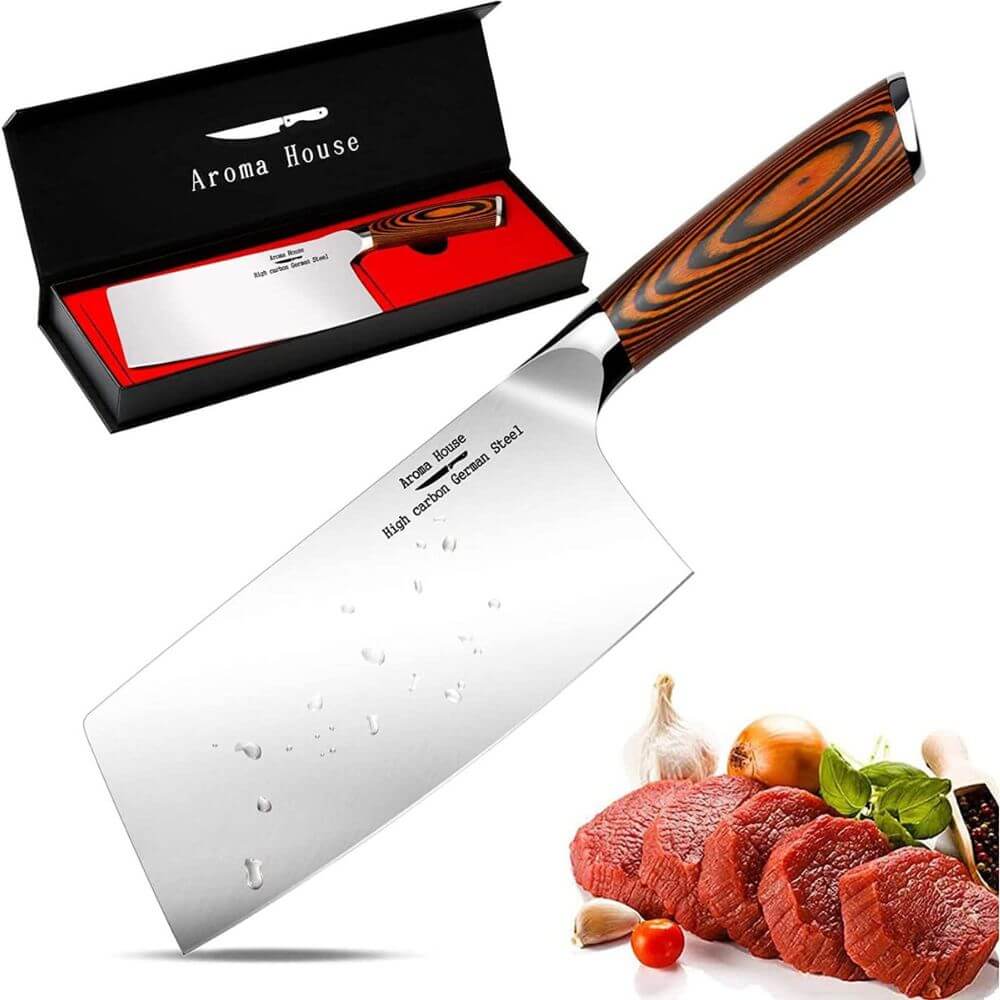It's time to stop hacking away at your meat like a caveman with a dull blade. You deserve a knife that can keep up with your culinary skills, and produce results that are nothing short of perfection.
The best knife to cut meat is one that is sharp, sturdy, and has a comfortable grip to give you clean and precise cuts.
Whether you’re making a roast or grilling up a steak, you need to have the right knife to get the job done. The perfect meat cutting knife can make all the difference to allow you to handle any cut of meat with ease.
But where to start? With so many options on the market, picking the right one can be a daunting task. In this article, we'll help you navigate through different types of knives used for cutting meat, and what to consider when selecting one for your specific needs.
So, get ready to take your meat cutting skills to the next level as we embark on a journey to discover the best knives on the market. Get ready to slice and dice like a pro!
How We Choose The Best For You
We at IncredibleRatings understand how difficult it can be to find the right product, especially when there are so many options on the market.
With so many products available it can be overwhelming to try and figure out which one is the best fit for you and your budget.
Our team has done all the work for you, and read through thousands of consumer reviews who have given feedback on products after personally testing them.
So, after doing extensive research and with no review left unchecked, we bring you our list of the best knife for cutting meat.
Read on to find out which knife works best for you!
Each product below was independently selected by our editors. Some may have been sent as samples for us to fiddle with, but all opinions in this article are our own. IncredibleRatings is a participant in the Amazon Services LLC Associates Program, an affiliate program that allows us to earn money linking to Amazon.com and associated websites. When you click on or make a purchase through an affiliate link on IncredibleRatings, we might get a small commission at no additional cost to you.

Best Butcher Knife for Cutting Meat
Dalstrong Butcher Knife - 8 inch - Gladiator Series - Cimitar Breaking Knife
Why We Chose It
Introducing Dalstrong’s Gladiator Series butcher's breaking knife — and what a powerhouse it is!
You'll wonder how you ever managed without butcher knives when crafting the perfect cut of your favorite meats.
This ultra-sharp blade is expertly crafted to help you break through cartilage, trim fat, and perfectly portion all types of seafood, poultry, pork, beef and more.
Whether you're an at-home chef or a professional cook, this sharp knife will take your meat preparations to the next level.
Plus, it's built to be durable with Dalstrong's high-end materials.
Get ready to make savory dishes that are sure to impress family and friends alike!
Having this butcher knife will take your dinner game from average to delightful so don't miss out — pick yours up today.
What You Should Know
The ultimate culinary experience awaits with this engineered-to-perfection utensil.
Each piece is carefully crafted with a Rockwell hardness of 56+ and then hand polished to a satin finish.
The tall blade height allows for plenty of knuckle clearance as well as improved flexibility, making the slicing process easier than ever before.
It's also certified by the National Sanitation Foundation (NSF), meaning it meets their rigorous safety standards and is safe for everyday use in the kitchen.
As an added bonus, you're guaranteed satisfaction or your money back.
Why We Chose It
Introducing the Imarku Japanese chef's knife—your perfect kitchen companion!
Your culinary skills will go to the next level with this multi-functional knife.
This Japanese knife is designed for professional use, able to chop and slice just about anything your heart desires.
Plus, its HRC of 56-58 makes it one of toughest knives in its class for long-lasting performance.
And if physical fatigue after extended use had been a problem for you before, worry no more—Imarku’s handle is made from Pakka, making it ergonomically designed to reduce finger numbness or aches.
Upgrade your kitchen today with Imarku’s Japanese chef knife!
What You Should Know
The Imarku knife is the perfect combination of Japanese engineering and stainless steel for strength and durability.
It features a 8-inch long blade crafted from an incredibly tough 2.3 mm thick steel that consists of 0.6%-0.75% carbon for extra strength as well as 16-18% chrome to make sure the knife won't rust or corrode over time.
With its 5-inch handle, the overall length of the knife is 13 inches, making it ideal for both food preparation and outdoor activities alike.
Perfectly balanced with a comfortable grip shape, this fabulous Imarku knife is a must-have item in any kitchen or campsite!
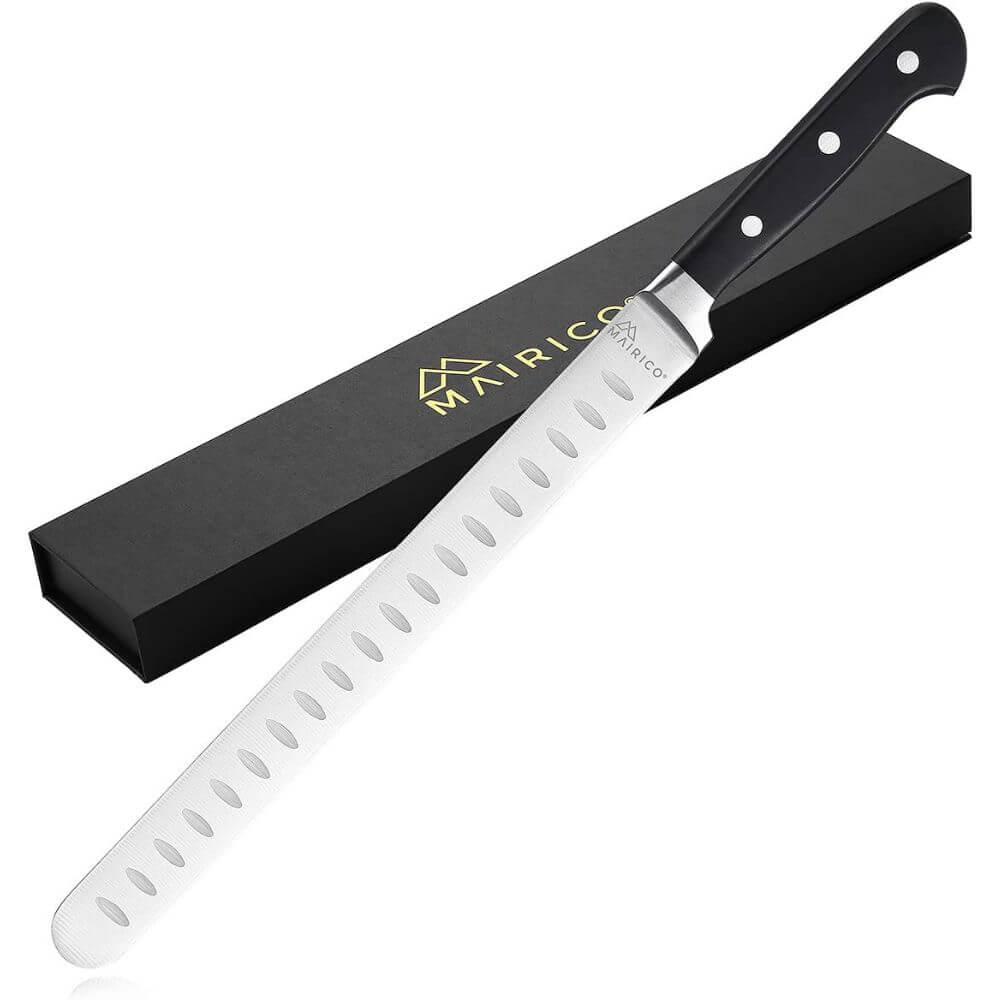
Best Slicing Knife for Cutting Meat
Mairico Ultra Sharp Premium 11-inch Carving Knife
Why We Chose It
The Mairico ultra sharp premium 11-inch slicing knife is a professional’s dream come true!
You can precisely and easily slice through anything you need with minimal effort, thanks to the excellent quality stainless steel blade.
This exceptional long blade length makes it ideal for brisket, pork loins, turkey, ham and smoked salmon as well as vegetable and fruit - perfect for large roasts or completing that perfect charcuterie board.
This slicer is sturdy as well as stylish and will handle any kitchen task easily.
It's tough but still light enough to give you complete control of every cut.
Enjoy its comfortable grip and feel like a pro chef each time you use it.
What You Should Know
The Mairico slicing knife has been thoughtfully designed with you in mind.
Its ergonomic design and secure grip gives it a well-balanced weight distribution, meaning your safety and comfort are guaranteed during use.
Mairico is so sure that you'll love this knife that they offer a full refund, just in case you're not completely satisfied - so why not take the dive and add this to your cart right away?
You have nothing to lose!
Why We Chose It
Are you looking for the perfect meat cleaver?
Aroma House has the ideal solution.
The multifunctional cleaver is just what you need.
It is tailor-made to fit your cooking needs, suitable for various tasks such as cutting, chopping, slicing, deboning and cleaving meats.
Whether you are preparing a delicious steak or a mouthwatering roast, this cleaver will get the job done in no time!
Not to mention that it easily slices through vegetable and light bone with utmost precision.
This knife comes equipped with an ergonomically designed handle so that you can handle your tasks comfortably without compromising on accuracy and efficiency. Furthermore, it is also easy to resharpen, clean and maintain according to your needs.
What You Should Know
If you know someone who loves to cook, then this cleaver is the perfect gift to surprise them with.
Its carbon stainless steel make up helps greatly improve its hardness up to 58-60 RHC, boasting strong metal elements like chromium, molybdenum, and vanadium for a great anti-rust exterior and sharp cutting edge that won't wear down easily.
Plus, it comes in a box with magnetic closure meaning it has a place to be stored safely when not in use.
For any home chef or professional chef, this cleaver makes a fantastic present.
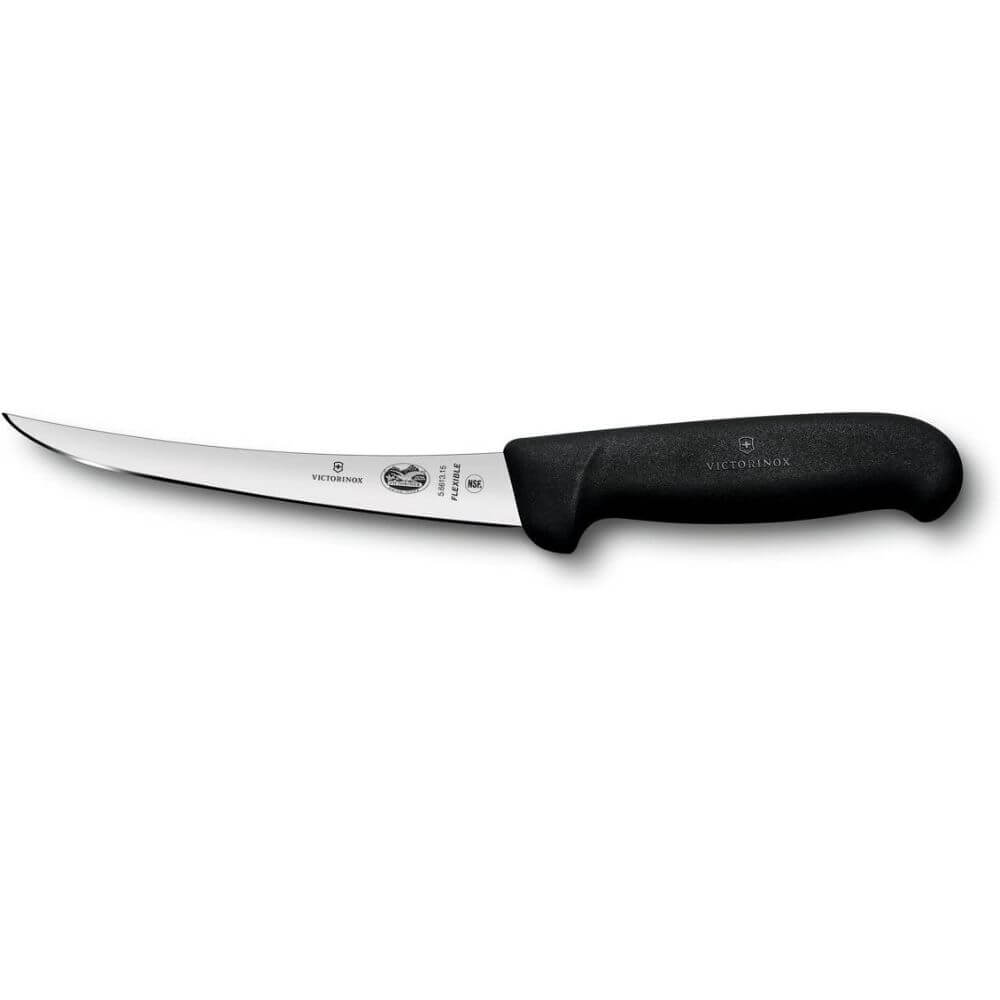
Best Boning Knife for Cutting Meat
Victorinox Fibrox Pro 6-inch Curved Boning Knife
Why We Chose It
Are you looking for the ideal knife to help you prepare delicious meals with ease? Check out the Victorinox Fibrox Pro Boning Knife.
This essential kitchen tool is preferred by both home chefs and culinary professionals alike thanks to its superior weight and balance, comfortable handle, and razor-sharp edge that rarely needs re-sharpening.
This high-quality European steel knife will make your food prep tasks a breeze.
Its curved but flexible blade allows for better working angles and fit for removing meat or fish from the bone with accuracy.
And its patented Fibrox Pro handle design reduces hand and wrist fatigue, all while providing a secure, non-slip grip no matter how big or small your hands happen to be!
Plus, it’s National Sanitary Foundation (NSF) approved and dishwasher safe so you get an easy cleaning experience too.
The next time you plan a special meal or want to show off your culinary skills, reach for the Victorinox Fibrox pro boning knife.
What You Should Know
Victorinox Swiss Army is dedicated to helping you keep your blades in the best condition possible, which is why they recommend hand washing as the optimal cleaning method.
This means wiping down the knives with a soapy cloth and drying them straight away.
This way, there's no chance of them coming into contact with high pressure water that can result in chipping or dulling of the blade's edge.
If you're looking for further protection, regular honing should take place every few uses to ensure longevity in sharpness and performance.
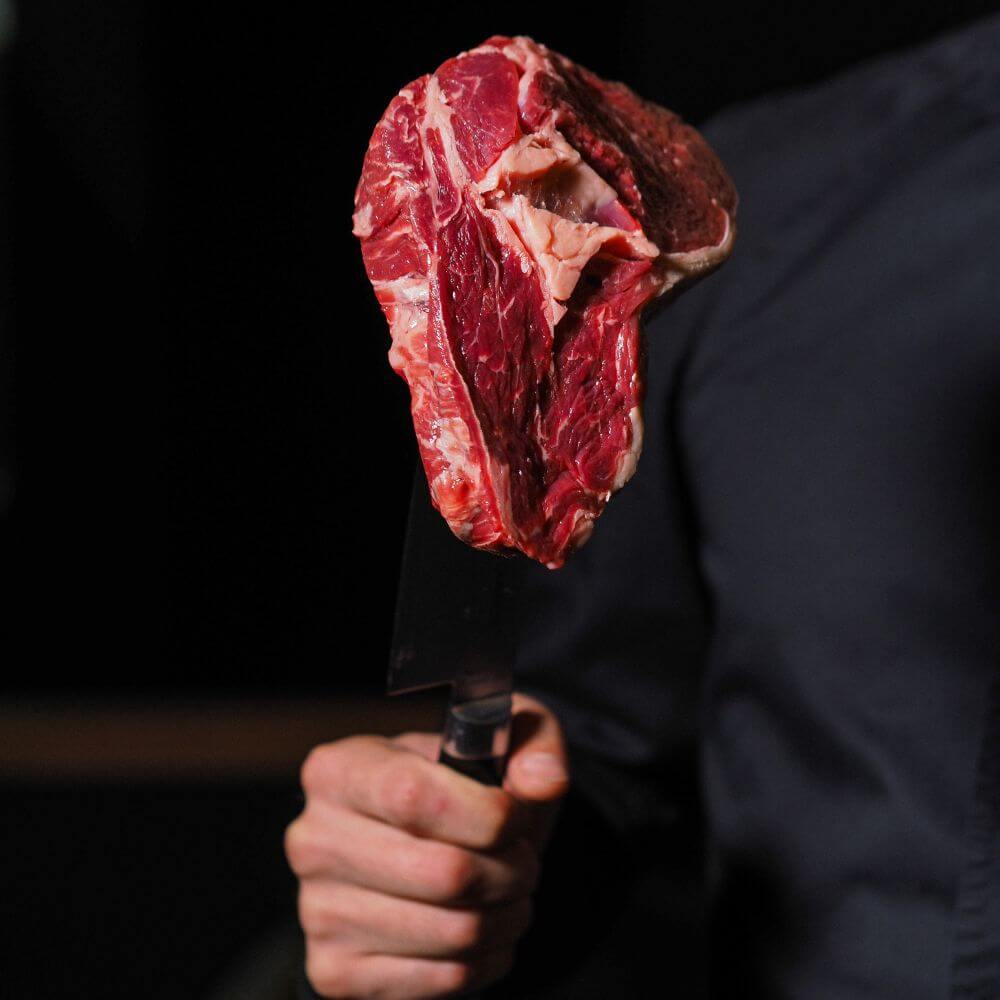
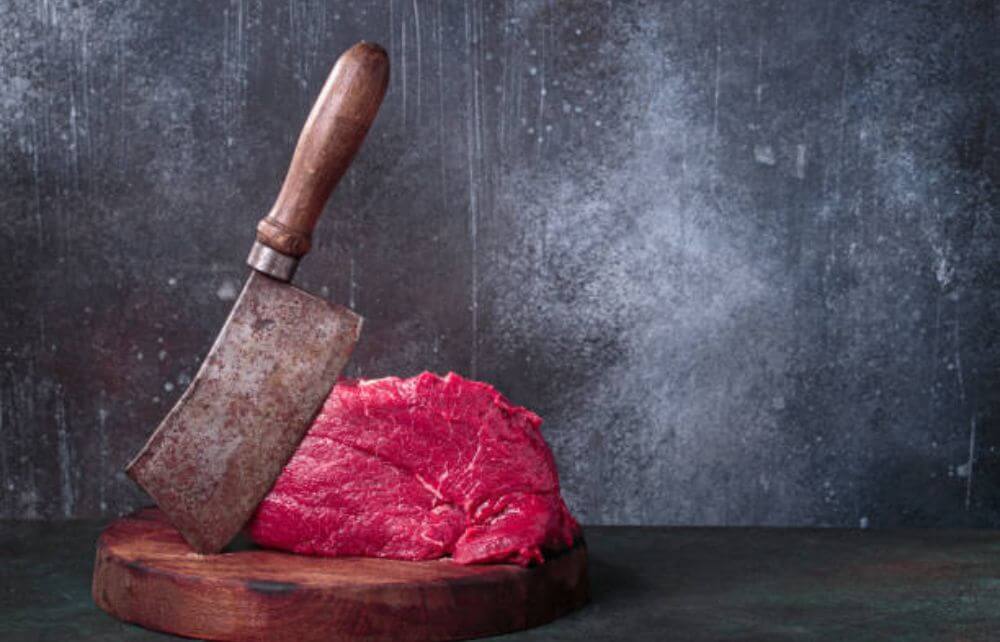
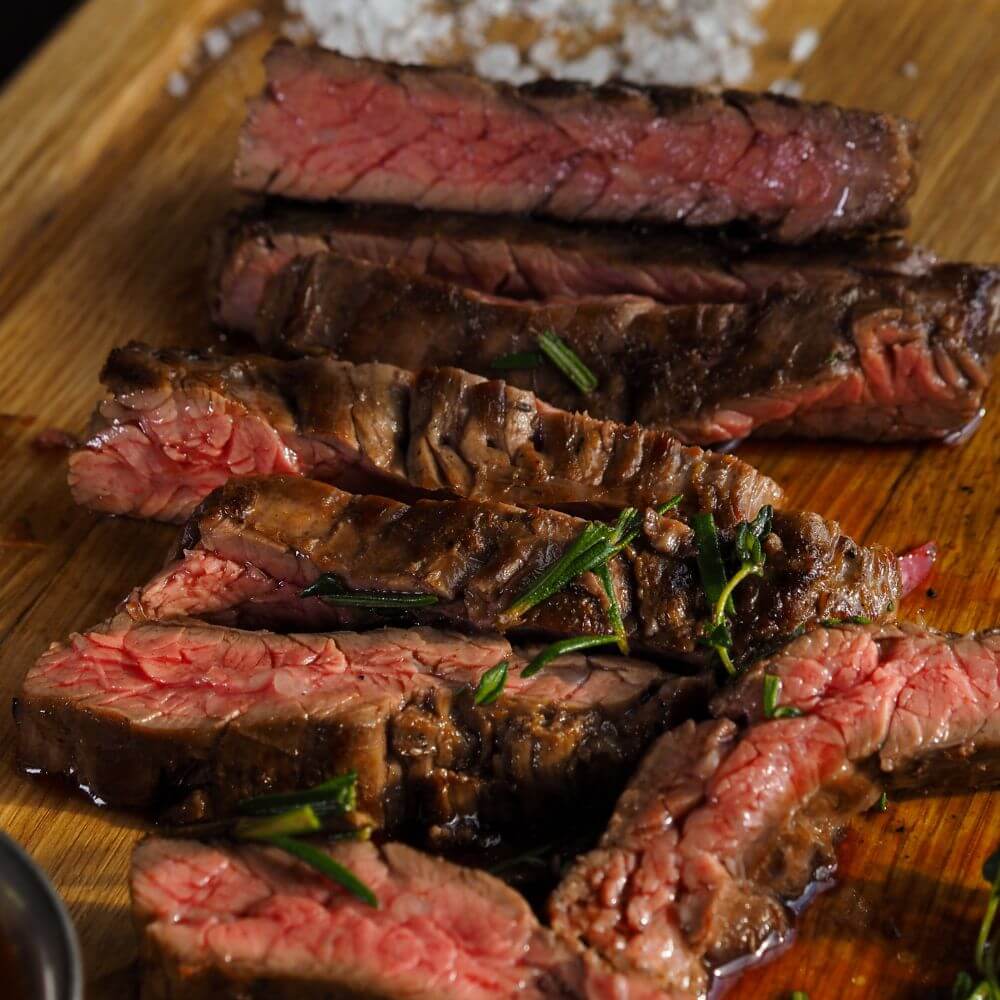
Best Knife for Cutting Meat Buyer's Guide
If you're like most people, you probably don't know a ton about knives.
And when it comes to buying the best knife for cutting meat, things can get even more confusing.
It's hard to know what to look for when you're shopping for a new knife.
Do you need a serrated blade or a non-serrated blade? What's the difference between a chef's knife and a butcher's knife?
We wrote this guide to help make things simpler for you. In it, we'll talk about what to look for in a good kitchen knife.
Feel
When selecting an ideal knife, it all starts with feel. Look for one that sits comfortably in your hand, providing a secure and balanced grip.
It should be strong enough to handle tougher cutting tasks but also light enough so that you can control it with ease.
If you don't know the exact type of knife you are looking for, experiment with different models until you find the one that fits best.
Handle
When it comes to cutting meat, having the right handle is essential.
Look for ones made from materials like stainless steel, wood, pakkawood, and bone as they offer great strength and a secure grip.
If you're chopping through tougher cuts of meat, look for heavier handles that can add weight for more efficient cutting.
Meanwhile, for carving and slicing knives, ensure that your handle gives you a snug fit and doesn't slip when in use.
Comfort
When looking for the perfect meat-cutting knife, an ergonomic handle should be at the top of your list.
Choose a grip that fits comfortably in your hand and protect your fingers with a metal guard instead of a plastic one, as it's much more durable.
Bolster
The bolster of a knife is an essential aspect that helps the blade transition smoothly to the handle.
Not only does it add to the overall strength, but it also creates balance and control while chopping.
Additionally, bolsters act as a protective guard, keeping your fingers away from the sharpened edge of the blade.
Balance
Finding a knife that is well balanced is key when it comes to ease of use.
Different kitchen knives can be weighted differently, so you should experiment with different ratios until you find one that feels comfortable in your hands.
It is important to make sure the weight of the knife is distributed evenly between the blade and handle; an overly weighted handle or blade can make cutting difficult for those without much experience.
Also, when selecting a knife, take into consideration the tang.
The depth of the blade in relation to the handle can have a great impact on how durable and easy to use it is.
A full-grip tang provides more strength and stability than a shorter tang, so choose wisely.
Blade Material
If you're seeking a chef's knife with the best value and longevity, a stainless steel blade is your go-to choice.
This metal is one of the most reliable and long-lasting materials on the market, making it ideal for frequent kitchen use.
High carbon or German steel are some other alternatives, as well as titanium, ceramics, and cobalt.
Types of Meat Cutting Knives
The different types of meat cutting knives include a carving knife, chef's knife, slicing knife, boning knife, filet knife, and even a paring knife.
A carving knife is designed for cutting larger joints of meat; a chef's knife is used to chop, mince and slice; a slicing knife has a thinner blade and sharper edge suitable for making thin, even slices; a boning knife is ideal for separating meat from the bone; a filet knife is used to cut smaller pieces of fish or poultry; and a paring knife is used to cut delicate meat.
However, the types of meat knives most commonly used in cooking are the carving knife, slicing knife and boning knife.
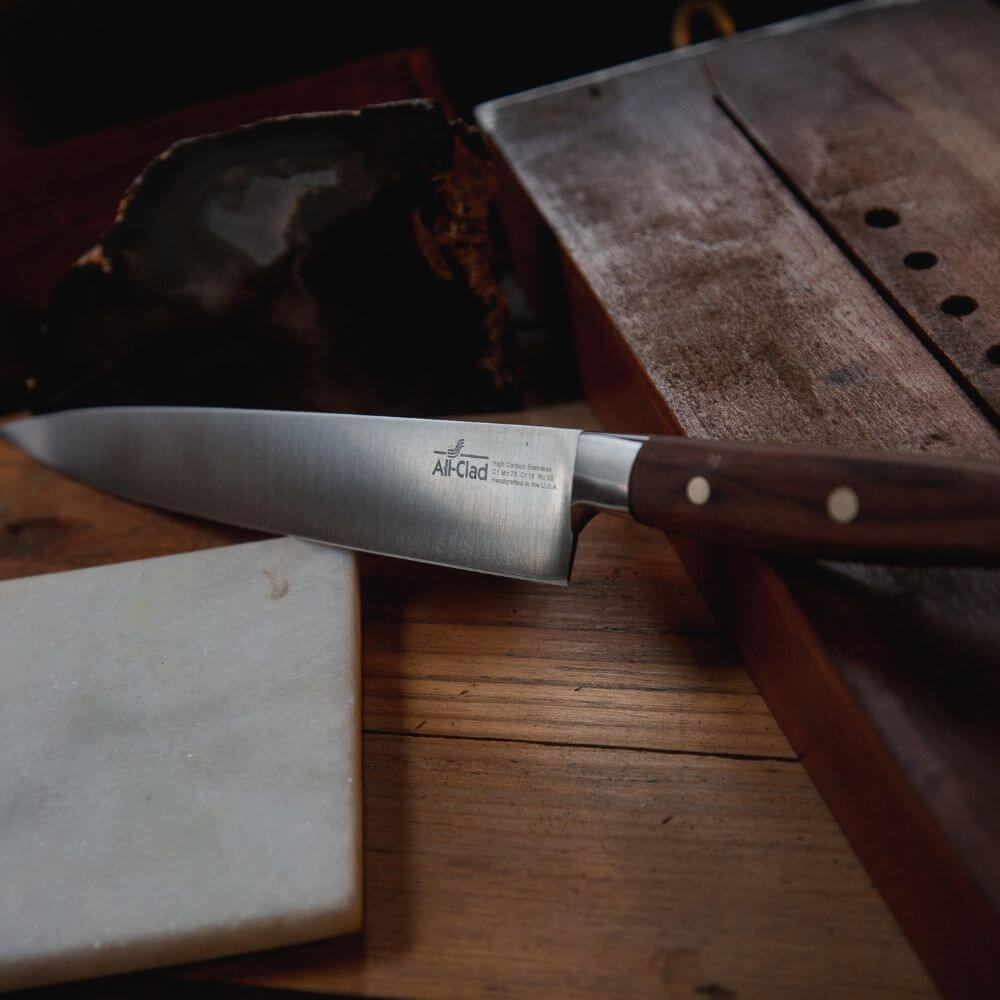
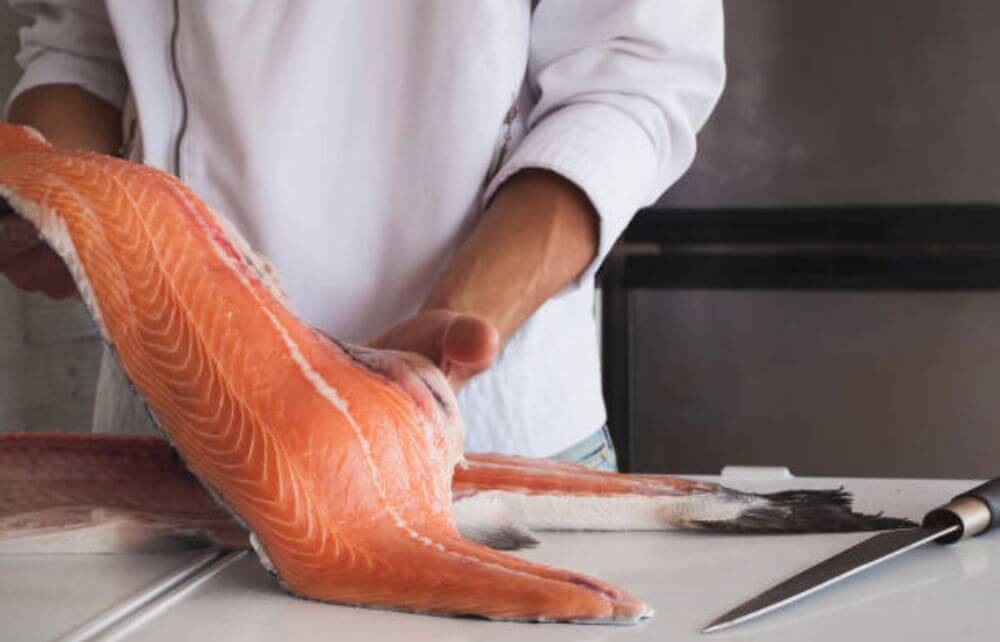

Maintenance
Investing in a high-quality knife for cutting meat is an important step for any kitchen.
While a good knife can last for years with proper care, even the best knives require some maintenance to stay effective. From wiping down blades after use to avoiding certain cutting boards and surfaces, there are certain steps you'll want to take to ensure that your knife stays sharp, safe, and in top shape.
Cutting Surfaces
When cutting meat with a knife, it's important to use a cutting board surface that is non-porous and durable.
Wood and bamboo cutting boards are ideal for most applications as these materials don't dull your knife easily and their surfaces provide enough grip to keep the meat from sliding around.
On the other hand, avoid using a glass or ceramic cutting board as they will cause more damage to your blade and also require more maintenance to keep clean than wood or bamboo boards.
Additionally, avoid using metal surfaces such as aluminum foil for cutting meat – metal surfaces are too hard for most knives, leading to a quickly blunted blade.
Cleaning
It's important to take good care of your meat knife if you want it to last and retain its sharpness.
To do this, you'll want to avoid submerging the blade in water or putting it in the dishwasher.
This is especially true for carbon-based steel knives as doing so could cause rusting over time.
If you have a stainless steel knife, a little soap and water won't hurt but be sure to wipe it off after use instead of letting it air dry.
Doing this will help prevent oxidation and ensure that your knife remains sharp and effective for cutting meat!
Best Knife for Cutting Meat FAQ's
When it comes to preparing meat, the knife you choose can make all the difference.
To help make your decision easier, we’ve gathered some of the most commonly asked questions about knives for cutting meat and compiled them into this list for you.
What is the best knife to cut meat?
A boning, cleaver or slicing knife is ideal for cutting meat as they are sharp and durable with a long blade that can reach deep into large cuts of meat.
Is there a difference between slicing and carving knives?
Yes, slicing knives are thinner and sharper than carving knives which have a wider blade and greater durability. Slicing knives excel at creating thin, even slices while carving knives are better suited to larger joints of meat.
Which material is the best for making a knife?
High carbon stainless steel is often the most commonly used material in making the best knives as it is strong, holds its edge well, but is still easy to sharpen when needed.
How do I keep my knife sharp?
It’s important to regularly sharpen your knife using either an electric sharpener or honing rod to ensure it remains sharp for cutting through raw or cooked meat.
Additionally, using a honing steel after every use will help maintain the sharpness of your knife over time.
What angle should I be using when sharpening my knife?
The angle you should use when sharpening your knife varies based on the type of metal used in construction and how frequently you intend on using it; typically an angle between 15 and 20 degrees is recommended for general kitchen use.
Is it possible to make my own butcher’s block?
Yes - although it might require some woodworking knowledge! You can make your own butcher’s block with hardwood such as maple or walnut which has been cut into planks that fit together tightly and then sealed with oil or wax before being finished off with sand paper and wood putty, among other tools if desired!
Can I use any type of oil on my butcher’s block?
Mineral oil is often considered to be one of the safest oils to use on butcher blocks as it does not go rancid over time like other vegetable-based oils may do; however, any food-grade mineral oil will suffice!
Should I store my cutlery in a drawers or cupboards?
Cutlery should preferably be stored in cupboards rather than drawers - this way they are less likely to become blunt due to knock inside a drawer moving things around them during usage.
Are there different types of handles available for blades?
There definitely are; there’s something out there that fits everyone’s preferences!
Some popular handle types include full tang handles (with rivets), half tang handles (without rivets), western style handles (rounded edges) and bolster handles (curved).
What kind of maintenance should I perform on my knife blades?
To ensure continued safe usage of your blades, regular maintenance such as cleaning, lubricating with mineral oil, sharpening and storage away from heat sources are all recommended practices!
Additionally, having your blades professionally inspected every 6 months ensures optimal safety during each use!
How often do you recommend replacing kitchen knives?
This depends largely on how frequently you use them - with heavy daily usage we suggest replacing them every few years at minimum; whereas occasional usage may mean they last much longer than that before needing replaced!
What should I look out for when selecting new kitchen knives?
Firstly, consider what type of material appeals most - whether that's a stainless steel blade or high carbon stainless steel blade - as this will determine its strength & durability over time.
Secondly, assess how comfortable it feels in hand & if suits personal preference; finally compare price points & customer reviews before making purchasing decision!
What is the difference between a stamped knife and a forged knife?
The primary difference between a stamped knife and a forged knife is the way in which they are made.
A stamped knife is made from pre-shaped steel that has been cut and shaped from a single sheet of metal, while a forged knife is formed by hammering heated metal into shape.
Additionally, forged knives tend to be more durable and have a better edge retention than the stamped counterparts.
Can you use a bread knife to cut meat?
While some people may opt to use a bread knife to cut through meat, it is generally not recommended. A bread knife is serrated, with saw-like teeth, and have been designed to easily slice through softer surfaces like breads and cakes.
As such, they lack the sharpness and durability needed for tougher applications like cutting meat – resulting in uneven slices or even damaging your blade. Investing in a good carving or chef’s knife will yield better results when slicing through meats!
What Is The Best Knife for Cutting Meat for You?
There you have it!
We hope this article has helped you wade through the hundreds of knives for cutting meat, to find the perfect one for your needs.
Any of the options on our list will work for you, but if you want our choice, we think the Imarku Japanese chef's knife would be the one to go with. It is the most versatile and multifunctional, so you can easily cut through many different types of meat.
Happy Carving!
Where to go next for related articles:
